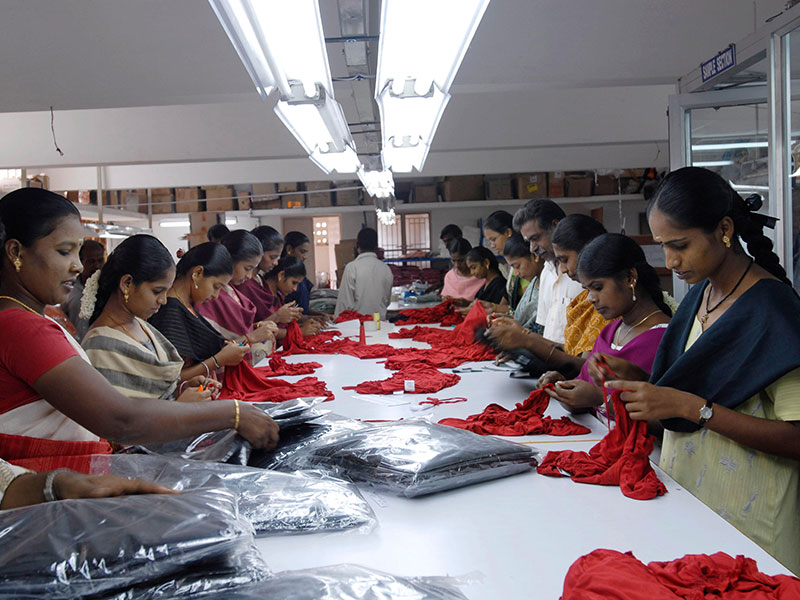Header Photo Credit: Kindel Media_Pexels
Key Points
Part I: Enforceable Brand Agreements
- Enforceable Brand Agreements (EBAs), International Framework Agreements (IFAs), or Global Framework Agreements (GFAs) are negotiated instruments between multinational enterprises and global union federations. They commit companies to ensuring core principles covering labor relations and working conditions are respected throughout their supply chains.
- Enforceable brand agreements offer a robust framework for addressing labor abuses by providing legal obligations, clear accountability, regular monitoring, and penalties.
- The enforceable nature of this tool makes it more effective in promoting workers' rights and ensuring fair labor practices than a company-led code of conduct.
- Companies should involve unions, workers, and other relevant stakeholders in the drafting EBAs. EBAs should inform workers about their rights and incorporate mechanism for safe working conditions, incorporate training programs for workers and managers, and inform workers about the protections and rights under the agreement.
Part II
- In cases where Enforceable Brand Agreements (EBAs) may not be feasible, companies may use company-led codes of conduct as a step towards improving suppliers’ compliance with labor rights standards.
- A code of conduct is a document that sets out the standards and policies with which a company and its suppliers and subcontractors are expected to comply. At times, their effectiveness can be limited by their voluntary nature, lack of enforcement, and the absence of rigorous training for workers and managers on the provisions therein.
- Codes of conduct need to include internationally recognized labor standards and fundamental rights at work and should serve as a foundation for more detailed guidance for the decision-makers who implement the social compliance system within company.
- Industry-specific guidance and protocols can make developing a code of conduct simple. In addition to this page, the U.S. government offers several tools to help companies of all sizes draft an effective code of conduct.
Examples in Action

The International Accord for Health and Safety in the Textile and Garment Industry (International Accord), which was signed in September 2021, is a legally binding agreement between brands and the global trade unions IndustriALL and UniGlobal Union. It evolved from the Bangladesh Accord on Fire and Building Safety in Bangladesh, negotiated after the tragic Rana Plaza collapse and the Tazreen factory fire in 2013.

This example presents sample code of conduct provisions on forced labor and child labor, taken from the Primark Code of Conduct. These provisions include detailed statements that employment is freely chosen (there must be no forced or compulsory labor in any form) and child labor must not be used (there must be no recruitment and employment of child labor).

UNI Global Union is a federation for the skills and services sectors. UNI Global Union has negotiated over 50 global agreements with multinational companies. In this example, learn about how these agreements build worker power and encourage worker-driven social compliance.

“Precarious employment” refers to employment situations that are short- or fixed-term and, in many cases, subcontracted. In this example, explore how Danone and IUF used an IFA to reduce precarious employment.

The U.S. State Department’s Office to Monitor and Combat Trafficking in Persons, in collaboration with Verité, the Aspen Institute, and Made in a Free World, re-launched the Responsible Sourcing Tool (RST) in 2022. The RST provides free information and tools to help companies, federal contractors, contracting professionals, and others understand and prevent the risks of human trafficking in supply chains.
Further Resources
- American Bar Association. Model Policies. 2014; available from http://www.americanbar.org/content/dam/aba/administrative/business_law/aba_model_policies.authcheckdam.pdf.
- Better Cotton. Principles and Criteria; available from https://bettercotton.org/better-cotton-standard-system/production-principles-and-criteria/.
- Bonsucro. What is the Bonsucro Production Standard?; available from http://www.bonsucro.com/production-standard/.
- Consumer Goods Forum. Guidance on the Priority Industry Principles; available from https://www.theconsumergoodsforum.com/wp-content/uploads/members-content/Guidance-on-the-Priority-Industry-Principles.pdf.
- Ethical Trading Initiative. ETI Base Code; available from https://www.ethicaltrade.org/eti-base-code.
- ICCR. Statement of Principles. 2013; available from https://www.chausa.org/docs/default-source/human-trafficking/2013-iccr-statement.pdf?sfvrsn=0.








